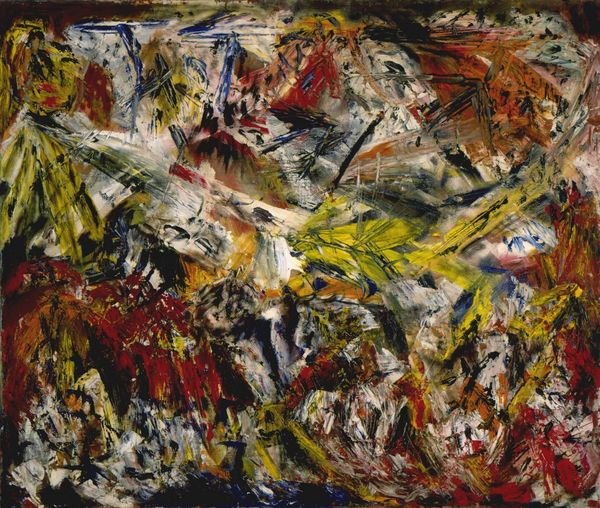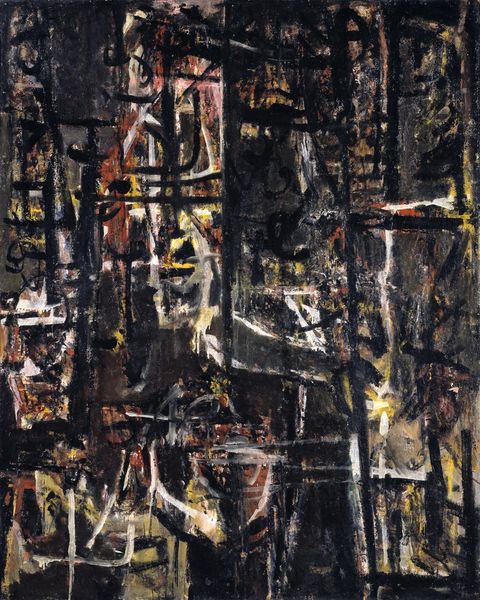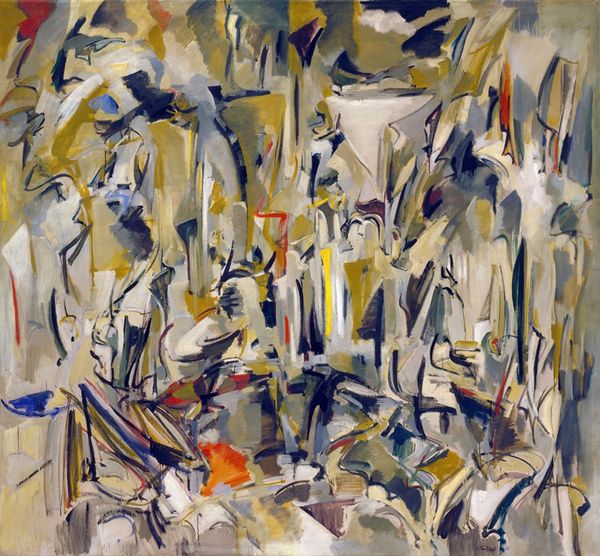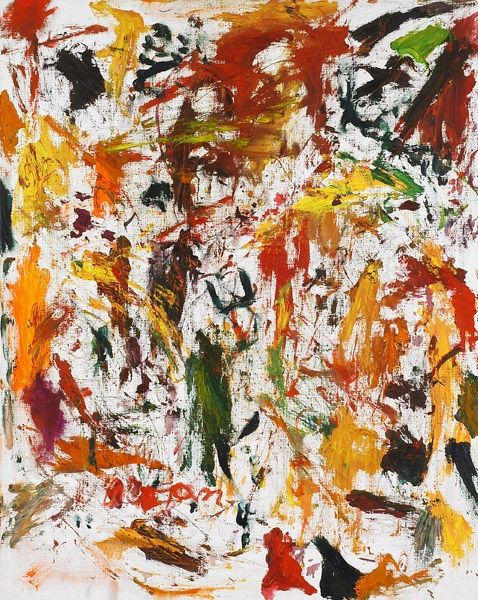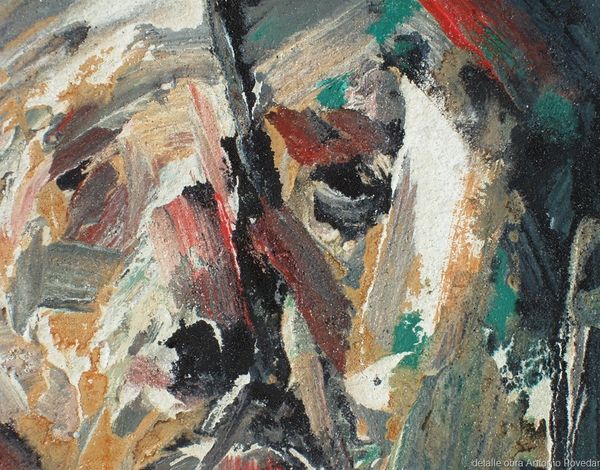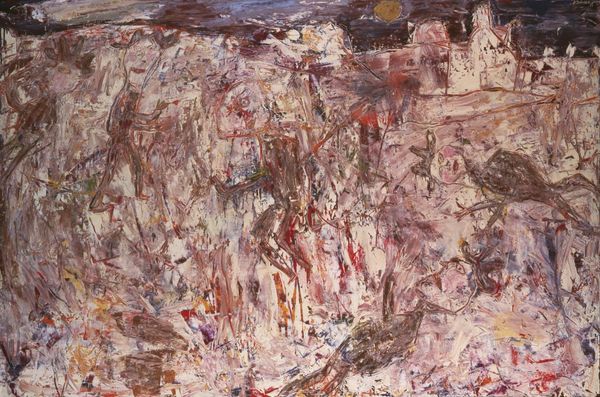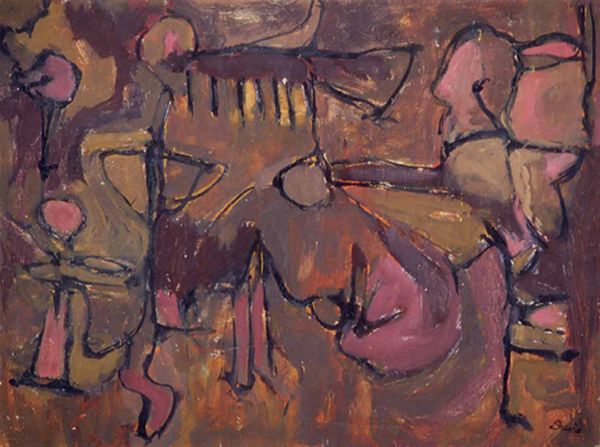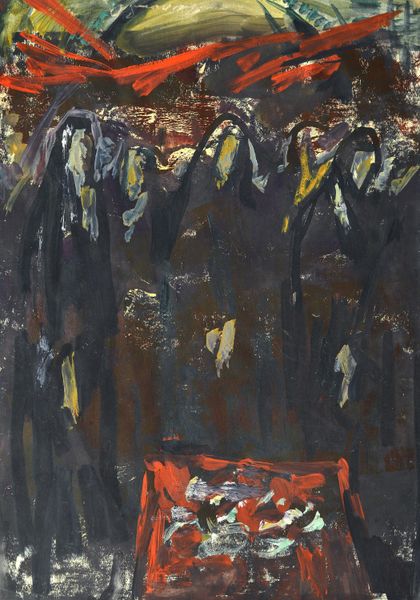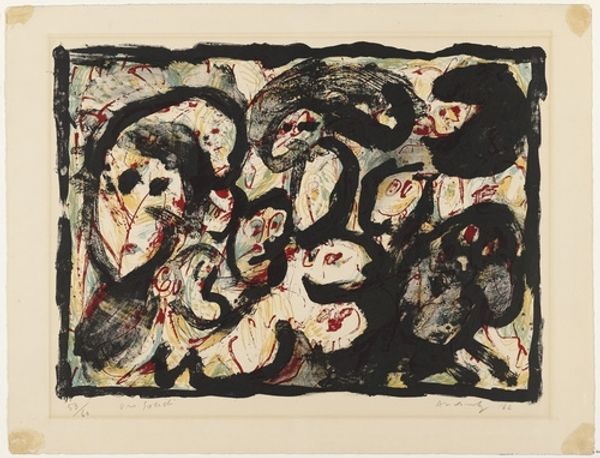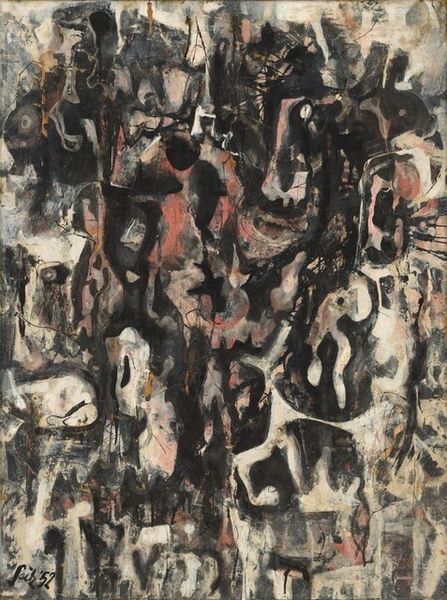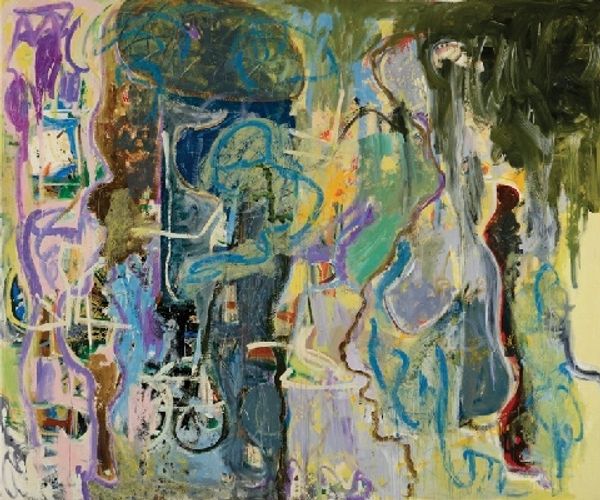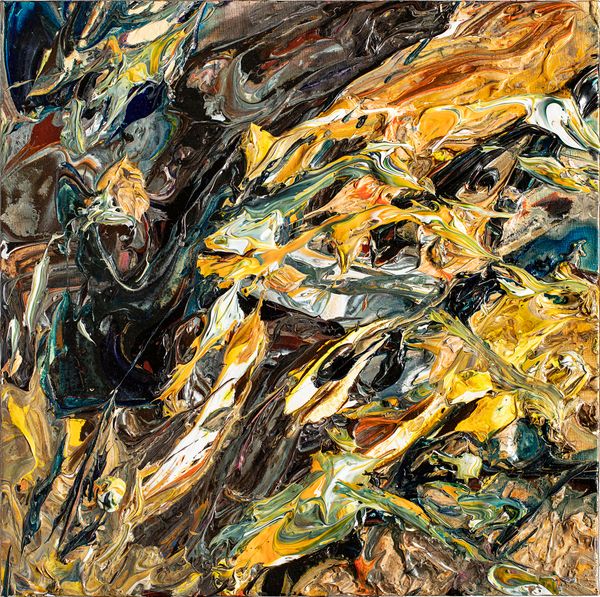
Copyright: Behjat Sadr,Fair Use
Editor: This is Behjat Sadr's "Paradis, Panel of the triptych" from 1956, created with mixed-media and impasto techniques. I find its heavy, dark strokes quite imposing, almost oppressive. How do you interpret this work? Curator: Given Sadr’s background in Iran during a period of intense political and social upheaval, this "oppressive" mood might reflect her subconscious anxieties. What appears as merely “abstract expressionism” visually also acts as an emotional record. Do you see how the monochromatic palette and thick impasto build up layers? Editor: Yes, it’s as if the paint itself is struggling, mirroring a kind of internal turmoil. Was Sadr making a direct statement with this work? Curator: Direct? Perhaps not explicitly. But artists operate within socio-political contexts, consciously or unconsciously. Think about Iran in the 1950s. Modernization efforts, Western influences, and the seeds of political dissent were all swirling. Sadr, as a modern woman artist, was undoubtedly navigating those complex currents. Is there a geometric rigidity fighting to get out? Editor: I see what you mean. Behind all the gestural strokes is an almost architectural structure buried inside. How does the title fit into this narrative? Curator: “Paradis” ironically contrasts with the somber visuals, creating tension. Perhaps it's a commentary on the idealized vision of progress clashing with the lived experience. What did you learn after analyzing all this? Editor: I initially saw only darkness and heaviness, but now understand it is charged with historical and political undercurrents relevant to the artist. It's no longer *just* abstract. Curator: Exactly. Art often functions as a register of its time, reflecting the collective anxieties and aspirations of society.
Comments
No comments
Be the first to comment and join the conversation on the ultimate creative platform.
